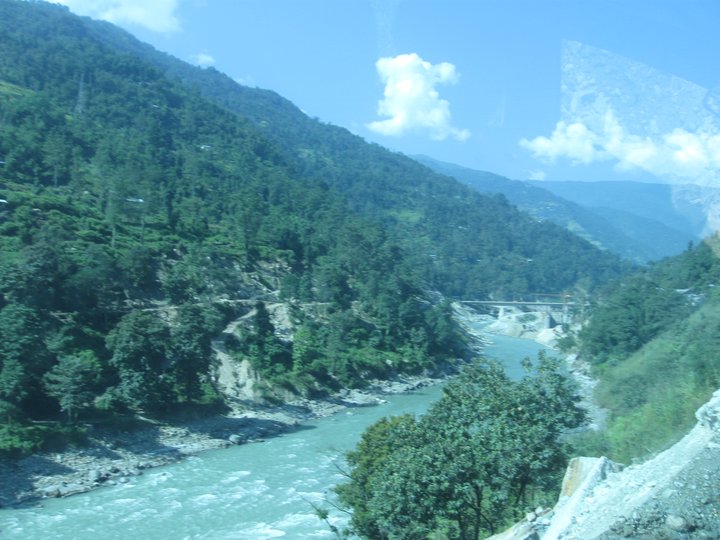
WANDERLUST Sea Nile Photo : M K Paul Samsara Mansarovar
The Nile, often referred to as the lifeblood of North Africa, has woven its sinuous path through the region’s landscape for millennia, leaving an indelible mark on its history and culture. Stretching over 4,000 miles, it stands as the longest river in the world, coursing through multiple countries including Egypt, Sudan, Ethiopia, and beyond. Its significance transcends mere geography; the Nile has been a source of sustenance, inspiration, and conflict, shaping the identities of the peoples who call its banks home. From ancient civilizations to modern nations, the Nile’s influence remains profound.
Historical Significance:
The history of North Africa is intrinsically linked with the Nile. Its fertile banks provided the foundation for some of the earliest known civilizations. Ancient Egypt, one of the world’s most iconic civilizations, flourished along the Nile’s shores, harnessing its waters for agriculture, transportation, and trade. The annual flooding of the Nile, caused by seasonal rains in Ethiopia, deposited nutrient-rich silt, creating fertile land ideal for agriculture. This natural cycle, known as the inundation, sustained Egypt’s agricultural prosperity and enabled the development of a sophisticated society.
The Nile also served as a vital transportation route, facilitating trade and communication between different regions. Ancient Egyptians utilized boats and rafts to navigate its waters, transporting goods such as grains, stone, and precious metals. The river acted as a conduit for cultural exchange, allowing ideas, technologies, and people to flow freely across vast distances. This interconnectedness laid the groundwork for the rich tapestry of cultures that characterize North Africa today.
Cultural Influence:
The Nile’s influence extends beyond its practical utility; it has deeply permeated the cultural fabric of North Africa. In ancient Egyptian mythology, the river held divine significance, embodying concepts of creation, fertility, and renewal. The annual flooding was seen as the result of the god Hapi’s tears, which brought life-giving waters to the land. Temples and monuments were built along the Nile’s banks to honor deities and commemorate important events, reflecting the spiritual bond between the people and their river.
Moreover, the Nile inspired artistic expression in various forms, from hieroglyphic inscriptions to monumental architecture. The grandeur of structures like the Great Pyramids of Giza and the temples of Luxor and Karnak stand as enduring testament to the creative genius of ancient Egyptians. These monumental achievements continue to captivate the imagination of people worldwide, serving as enduring symbols of human ingenuity and achievement.
Modern Challenges and Opportunities:
While the Nile has been a source of abundance and prosperity for millennia, it also presents contemporary challenges and opportunities for the region. Population growth, urbanization, and climate change have placed unprecedented pressure on the river’s resources. Competition for water resources among Nile basin countries has led to tensions and conflicts over access and control. Additionally, environmental degradation and pollution threaten the health and sustainability of the river ecosystem.
However, amidst these challenges, there are opportunities for cooperation and sustainable development. Initiatives such as the Nile Basin Initiative seek to promote equitable and cooperative management of the river’s resources, fostering dialogue and collaboration among riparian states. Investments in infrastructure, irrigation, and renewable energy offer pathways to harness the Nile’s potential for economic growth and development while preserving its ecological integrity.
Preserving a Cultural Legacy:
As custodians of a rich cultural legacy, the peoples of North Africa have a vested interest in safeguarding the Nile for future generations. Efforts to preserve and promote cultural heritage along the river’s banks are essential for maintaining a sense of identity and continuity in an ever-changing world. Museums, archaeological sites, and cultural festivals serve as repositories of collective memory, celebrating the achievements of past civilizations and inspiring future generations.
Furthermore, education and awareness-raising initiatives can foster a deeper appreciation for the Nile’s cultural significance and the importance of responsible stewardship. By engaging communities in conservation efforts and sustainable practices, we can ensure that the Nile continues to nourish and enrich the lives of those who depend on it.
Sustainable Development for the Future:
In charting a course for the future, sustainable development along the Nile emerges as a paramount goal. Recognizing the interdependence of ecological health, economic prosperity, and cultural vitality, stakeholders must adopt holistic approaches that balance competing interests and prioritize long-term sustainability. Investment in renewable energy technologies, such as hydroelectric dams and solar power, offers the potential to meet growing energy demands while minimizing environmental impacts.
Similarly, integrated water management strategies, informed by scientific research and stakeholder consultation, can optimize resource allocation and promote equitable access for all riparian states. Embracing innovation and collaboration, Nile basin countries have the opportunity to forge a new paradigm of cooperation and shared prosperity, transcending historical divides and forging a path towards a more sustainable future. By harnessing the lessons of the past and the potential of the present, we can ensure that the Nile continues to flow as a symbol of hope, resilience, and unity for generations to come.
Conclusion
In conclusion, the Nile River stands as a timeless symbol of resilience, adaptability, and interconnectedness in North Africa. From its ancient origins to its modern-day significance, the Nile has shaped the course of history and culture in profound ways. Its waters have nurtured civilizations, facilitated trade and communication, and inspired artistic and spiritual expression. However, amidst its undeniable contributions, the Nile also faces contemporary challenges, including population growth, climate change, and resource management issues. Yet, there is hope in cooperative initiatives and sustainable development efforts that seek to preserve its ecological integrity while meeting the needs of riparian communities. As custodians of this rich cultural legacy, it is incumbent upon us to safeguard the Nile for future generations, ensuring that its waters continue to flow as a source of unity, prosperity, and cultural heritage. By embracing the lessons of the past and the opportunities of the present, we can forge a path towards a more sustainable future where the Nile remains a beacon of hope, resilience, and unity for all who depend on it.
By: Raunak Jha
Write and Win: Participate in Creative writing Contest & International Essay Contest and win fabulous prizes.


